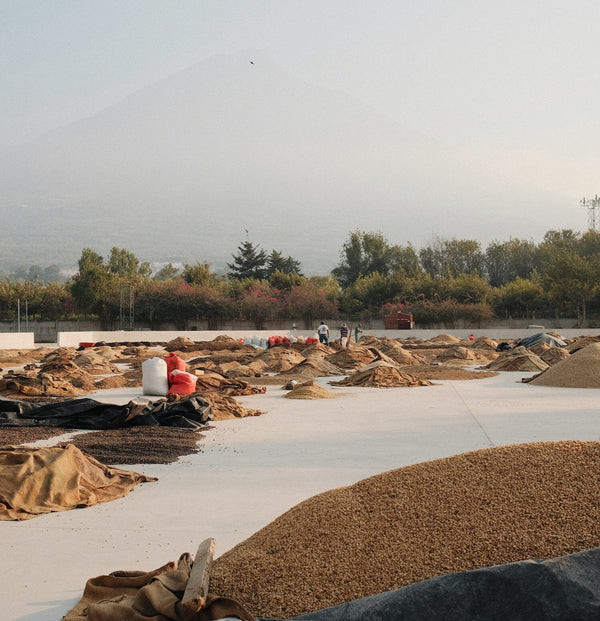The different coffee processes
Coffee has to go through several stages before it gets to your daily cup, and processes are one of the most important. In addition to being essential to preserve the quality of the bean, processes help enhance certain flavors and even create new ones.
During our fieldtrips, we have seen processes of all kinds, from the traditional to the most experimental ones. While there are several ways to process coffee, with countless variations of each, I will stick to the main ones we usually carry, plus a few interesting twists on traditional methods that we sometimes have in stock.
Understanding Coffee Cherry Anatomy
Source: Andytown Coffee Roasters
The coffee tree produces coffee cherries and the beans we roast and brew are the seeds inside! The skin of a coffee cherry is green until the fruit ripens to a bright red, yellow, orange or even pink color, depending on the variety of the tree. Under the skin of the cherry is a thin layer called the mesocarp, more commonly known as the pulp. The mucilage is the inner layer of the pulp full of sugars; it is essential during fermentation.
Coffee beans, on the other hand, usually come in pairs in the cherry (except for 5% of coffees, which we know as Peaberry), and each is covered with a thin epidermis called a silverskin and a layer of papery hull called parchment.
The parchment is usually removed in hulling, which is the first step in the dry milling process. Machines or millstones are used to remove the remaining fruit and dried parchment from the bean.
Washed process
Popular in parts of Africa (including Rwanda and Kenya) and Central America, as well as Colombia, this processing method involves removing all the flesh and mucilage from the beans before they are dried.
After harvesting, the cherries are pulped to remove the skin and flesh, then are usually immersed in water so that the remaining mucilage can be washed away. Once the mucilage has been removed, the green coffee is then left to dry on raised beds or terraces.
Washed coffees are generally brighter and have a cleaner taste than other processing methods. This is because removing the cherry allows the inherent and natural characteristics of the coffee to shine through.
Natural process
Natural transformation is common in regions and countries with limited access to water, such as Kenya, Ethiopia and Brazil.
Once the ripe cherries are picked and sorted, they are dried completely intact on the patios (including the skin, flesh and mucilage) and are regularly turned to prevent the formation of mold. Once the cherries have reached the optimum humidity level (between 10% and 12%), the beans are removed.
Most natural processed coffees have fruitier flavors and are generally sweeter and fuller-bodied. They can sometimes have wine-like characteristics and heavier mouthfeel.
Honey process
Honey Process is popular in some Central American countries, especially in Costa Rica, where it was first developed and where we have had the chance to see it extensively.
Honey Process involves leaving a particular amount of flesh and mucilage on the bean as it dries. Like many newer treatment methods, the Honey Process is a hybrid of traditional and innovative techniques.
There are different types of Honey, including Black Honey, White Honey, Yellow Honey and Red Honey. These colors indicate how much of the cherry flesh is removed.
For example, Black Honey is similar to natural processed coffees since that majority of the skin, fruit and mucilage remains on the coffee as it dries. Comparatively, White Honey is more like washed coffee because most of the flesh and mucilage are removed, giving it a smoother cup profile. Due to the variety of Honey processing techniques, these coffees can have a variety of profiles, but generally speaking, they are sweeter.
Anaerobic fermentation
Experimental processing methods are not new to specialty coffee. In many producing countries, tradition and innovation coexist in coffee processing to improve the quality and sustainability of the final product.
However, in recent years there has been a noticeable increase in the number of more innovative treatment methods. They are usually more complex than traditional ones, as they involve more variables and require farmers to exercise more control over the process.As we traveled through farms and mills, we were able to see for ourselves the rise of anaerobic fermentation which has been gaining popularity over the past few years. With this method, the coffee beans are fermented in airtight containers. This process is carried out using whole cherries, which can be fermented for up to 96 hours.
Since there is no exposure to oxygen with anaerobic fermentation, the microorganisms breakdown sugars at a much slower rate, allowing more complex flavors to develop.



